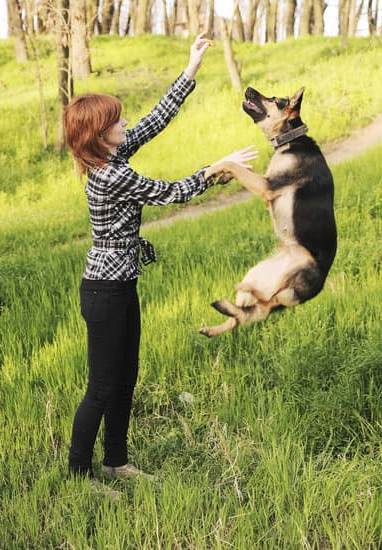Dog training collars have become an essential tool for pet owners seeking effective ways to train their furry companions. These devices offer a variety of functions that can aid in correcting behavioral issues and improving obedience in dogs. From bark control to off-leash training, dog training collars serve as a versatile solution for addressing various training needs.
One of the key purposes of dog training collars is to provide a means of communication between owners and their pets. These collars utilize different mechanisms, such as vibrations, sounds, or electrical stimulation, to convey signals to the dog during training sessions. By using these cues, pet owners can effectively communicate commands and reinforce desired behaviors in their dogs.
Furthermore, dog training collars offer a way to address specific behavioral problems in dogs, such as excessive barking, jumping on people, or ignoring commands. With proper use and training techniques, these collars can be valuable tools in shaping desired behaviors and promoting positive interactions between pets and their owners. Understanding the purpose and functions of dog training collars is crucial for successful pet training and behavioral modification.
Types of Dog Training Collars
Dog training collars come in a variety of types, each serving different purposes in thetraining and behavioral modification of your furry friend. One of the most common types is the traditional buckle collar, which is typically made of nylon or leather and is used for everyday walks and identification tags.
Martingale collars are another popular option, especially for dogs that tend to slip out of their regular collars. These collars tighten when the dog pulls on them but have a limited tightening action to prevent choking.
For those seeking more control over their pet’s behavior, a head halter or head collar may be a suitable choice. This type of collar fits around your dog’s head and muzzle, giving you more steering power during walks without putting pressure on their neck. However, it’s essential to acclimate your dog to wearing a head halter gradually to ensure they are comfortable with it.
Remote training collars, also known as shock collars or e-collars, are controversial but effective tools in teaching commands and correcting unwanted behaviors from a distance. These collars deliver varying levels of static stimulation or vibration through a handheld device operated by the owner.
It’s crucial to use remote training collars responsibly and under the guidance of a professional trainer to avoid causing harm or distress to your pet. Ultimately, choosing the right type of dog training collar depends on your dog’s temperament, training needs, and your own preferences as an owner.
How Do Dog Training Collars Work
Dog training collars work by providing a stimuli to the dog in order to reinforce positive behaviors or discourage negative behaviors. These collars are designed to deliver different types of stimuli, such as vibration, sound, or static shock, depending on the type of collar being used. The stimuli are triggered by a remote control held by the dog owner or trainer, allowing for immediate feedback and reinforcement during training sessions.
Understanding the Different Types of Stimuli
Vibration collars provide a gentle vibration that can be used as a cue for the dog to pay attention or to signal a reward. Sound collars emit a specific tone that can serve as a warning signal or as a reward marker.
Static shock collars deliver a mild electric shock when activated, which is often used as a deterrent for unwanted behaviors. Each type of stimulus has its own purpose and effectiveness depending on the individual dog’s temperament and training needs.
Creating Associations Through Conditioning
When using training collars, it is important to pair the stimuli with specific behaviors in order to create associations and condition the dog’s response. For example, when using a static shock collar for barking issues, the shock should be administered whenever the dog barks excessively. With consistent use and proper timing, the dog will learn to associate barking with the unpleasant sensation of the shock and eventually reduce their barking behavior.
Positive Reinforcement and Consistency
One key aspect of how dog training collars work is through combining their use with positive reinforcement techniques. By rewarding desired behaviors with treats, praise, or playtime in conjunction with using the training collar, dogs can learn more effectively and quickly. It is also crucial for owners to be consistent in their use of training collars, ensuring that signals are clear and expectations are consistent across all training sessions.
The Benefits of Using Dog Training Collars for Behavioral Correction
Dog training collars have been a popular tool among pet owners and professional trainers for behavioral correction. These devices offer several benefits when used correctly, aiding in teaching dogs appropriate behavior and improving their responsiveness to commands. Here are some of the advantages of using dog training collars for behavioral correction:
- Effective Communication: Dog training collars provide a means of clear communication between owner and pet, helping to establish boundaries and expectations.
- Consistency in Training: By delivering consistent feedback to the dog, training collars can reinforce desired behaviors and discourage unwanted actions.
- Quick Results: With proper use, dog training collars can expedite the training process by addressing specific behaviors promptly, leading to faster results.
In addition to these benefits, dog training collars can also be customized to suit individual dogs’ needs and temperaments. Some collars offer a range of settings, from mild vibrations to more intense stimuli, allowing owners to tailor the level of correction based on their pet’s sensitivity. This adaptability makes training collars a versatile tool that can be used for a wide range of behavioral issues.
When used responsibly and in conjunction with positive reinforcement techniques, dog training collars can be an effective tool for modifying behavior and improving obedience in dogs. However, it is essential for owners to educate themselves on how to properly use these devices to avoid potential risks or unintended consequences. In the following section, we will explore some important considerations regarding the potential risks and misuses of dog training collars.
Potential Risks and Misuses of Training Collars
Dog training collars can be a valuable tool in correcting undesirable behaviors in dogs, but it is important to understand the potential risks and misuses associated with their use. While these collars can be effective when used properly, improper use or misuse can lead to negative consequences for your pet. Here are some important considerations to keep in mind when using training collars for your dog:
- Improper Fit: Ensuring that the training collar fits your dog properly is crucial. A collar that is too tight can cause discomfort or injury to your pet, while a collar that is too loose may not deliver the intended correction effectively.
- Overuse of Corrections: Using the training collar too frequently or at high intensity levels can lead to desensitization in your dog. This means that your pet may become immune to the corrections provided by the collar, rendering it ineffective in the long run.
- Incorrect Training Techniques: It is important to pair the use of a training collar with positive reinforcement techniques to ensure that your dog understands what behavior is being corrected. Relying solely on the collar without proper training can confuse and stress out your pet.
In addition to these risks, it is essential to consider the emotional well-being of your dog when using a training collar. Some dogs may be more sensitive than others and may not respond well to certain types of correction. It is always recommended to consult with a professional trainer or veterinarian before using a training collar on your pet.
Remember, the goal of using a training collar should be to improve communication with your dog and correct unwanted behaviors in a humane and effective manner. By understanding and mitigating the potential risks associated with these tools, you can ensure a successful training experience for both you and your furry companion.
Training Techniques With Dog Training Collars
When using dog training collars, it is essential to understand the proper techniques to ensure effective training and behavioral modification in your pet. One key tip is to start with the lowest level of stimulation or vibration on the collar and gradually increase it as needed. This gradual approach helps prevent overwhelming your dog and allows them to associate the correction with their behavior.
Consistency is another crucial factor when using training collars. It is important to maintain consistency in your commands, rewards, and corrections to help your dog understand what behavior is expected of them. Inconsistency can lead to confusion and hinder the training progress. Additionally, positive reinforcement should always accompany the use of training collars to encourage good behavior.
It is also recommended to keep training sessions short and focused when using dog training collars. Shorter sessions spread throughout the day are more effective than long, extended sessions. This approach helps keep your dog engaged and prevents them from becoming bored or tired during training. By incorporating these tips into your training routine, you can maximize the effectiveness of dog training collars in teaching desirable behaviors to your pet.
| Beneficial Techniques | Importance |
|---|---|
| Start with lowest stimulation level | Prevents overwhelming the dog and aids in association |
| Maintain consistency in commands | Helps avoid confusion and promotes clarity for the pet |
| Keep sessions short and focused | Prevents boredom or fatigue during training |
Choosing the Right Dog Training Collar for Your Pet
When it comes to choosing the right dog training collar for your pet, there are several factors to consider to ensure that you are selecting the most suitable option for your furry friend. Understanding the different types of dog training collars and their specific functions can be crucial in making an informed decision that will benefit both you and your dog in the long run.
So, what do dog training collars do and how can you pick the best one for your pet?
Consider Your Dog’s Size and Breed
One of the first factors to take into account when selecting a dog training collar is your pet’s size and breed. Different breeds may respond better to certain types of collars, so it is essential to choose a collar that is appropriate for your dog’s specific characteristics. For example, larger dogs may require more robust collars with stronger stimulation levels, while smaller breeds might benefit from more gentle correction methods.
Training Goals
Another important factor to consider when choosing a dog training collar is your training goals. Are you looking to correct certain behavioral issues or simply enhance obedience commands? Different types of collars offer various features tailored to specific training objectives, so it is vital to align your goals with the functionality of the collar you select. Whether you are focusing on basic obedience or addressing more complex behavior problems, there is a suitable collar available for every training need.
Comfort and Safety
In addition to functionality, comfort, and safety should also be prioritized when choosing a dog training collar for your pet. Look for collars that are adjustable and have padding or soft materials to ensure that they are comfortable for your dog to wear during training sessions.
Furthermore, opt for collars with safety features such as auto-shutoff mechanisms or limited stimulation levels to prevent any harm or discomfort to your furry companion. By considering these factors, you can select a dog training collar that not only effectively supports your training efforts but also ensures the well-being of your beloved pet.
Success Stories
Many dog owners have found success in using training collars to correct behavioral issues and improve obedience in their pets. One such success story comes from Sarah, who had a hard time walking her energetic Labrador, Max, as he would constantly pull on the leash. After trying various training methods without success, she decided to use a remote training collar. With consistent use and positive reinforcement, Max quickly learned to walk calmly beside her without pulling.
Another dog owner, David, faced challenges with his rescue dog, Bella, who had separation anxiety and destructive behavior when left alone at home. Despite trying various calming techniques, Bella’s behavior did not improve until David tried a vibration collar that helped distract her during anxious episodes. Over time, Bella’s separation anxiety decreased significantly, and she became more relaxed when home alone.
Using dog training collars is not always easy, but for many pet owners like Sarah and David, the results speak for themselves. By understanding their dogs’ specific needs and using the collars responsibly alongside positive reinforcement techniques, they were able to see significant improvements in their pets’ behavior. It is essential to remember that each dog is unique, so what works for one may not work for another.
| Success Story | Training Collar Used |
|---|---|
| Sarah’s Labrador Max | Remote Training Collar |
| David’s Rescue Dog Bella | Vibration Collar |
Final Thoughts
In conclusion, dog training collars play a significant role in pet training and behavioral modification. These devices are designed to assist pet owners in teaching their dogs obedience and correcting unwanted behaviors. While some may have reservations about the use of training collars, when used correctly and responsibly, they can be effective tools in enhancing communication between dogs and their owners.
When considering what do dog training collars do, it is essential to acknowledge that they are not a one-size-fits-all solution. Different types of training collars cater to various training needs and styles, so it is crucial for pet owners to understand how each type works and which one would be most suitable for their dog.
Additionally, proper education on the correct usage of these devices is essential to prevent any potential risks or misuses that could harm the dog.
Overall, the use of dog training collars can yield positive results when paired with consistent and patient training techniques. By incorporating these devices into a well-rounded training program that includes positive reinforcement and clear communication, pet owners can effectively address behavioral issues in their dogs. It is important for owners to approach training with understanding, empathy, and dedication to ensure a harmonious relationship between them and their beloved pets.
Frequently Asked Questions
Are Training Collars Good for Dogs?
Training collars can be a useful tool for dogs when used correctly. They provide a way to communicate desired behaviors to the dog and can assist in teaching obedience commands.
What Is the Purpose of a Training Collar?
The purpose of a training collar is to aid in behavior modification and training for dogs. These collars are designed to help owners establish boundaries, improve obedience, and address behavioral issues like pulling on the leash or jumping on people.
Do Vets Recommend Training Collars?
The recommendation of training collars by vets can vary depending on the individual dog and situation. Some vets may endorse the use of certain types of collars, such as positive reinforcement-based training collars, while cautioning against punitive methods that can harm the dog or cause unnecessary stress.
It’s always best to consult with a vet or professional trainer before using any training collar on your pet.

Welcome to the blog! I am a professional dog trainer and have been working with dogs for many years. In this blog, I will be discussing various topics related to dog training, including tips, tricks, and advice. I hope you find this information helpful and informative. Thanks for reading!





